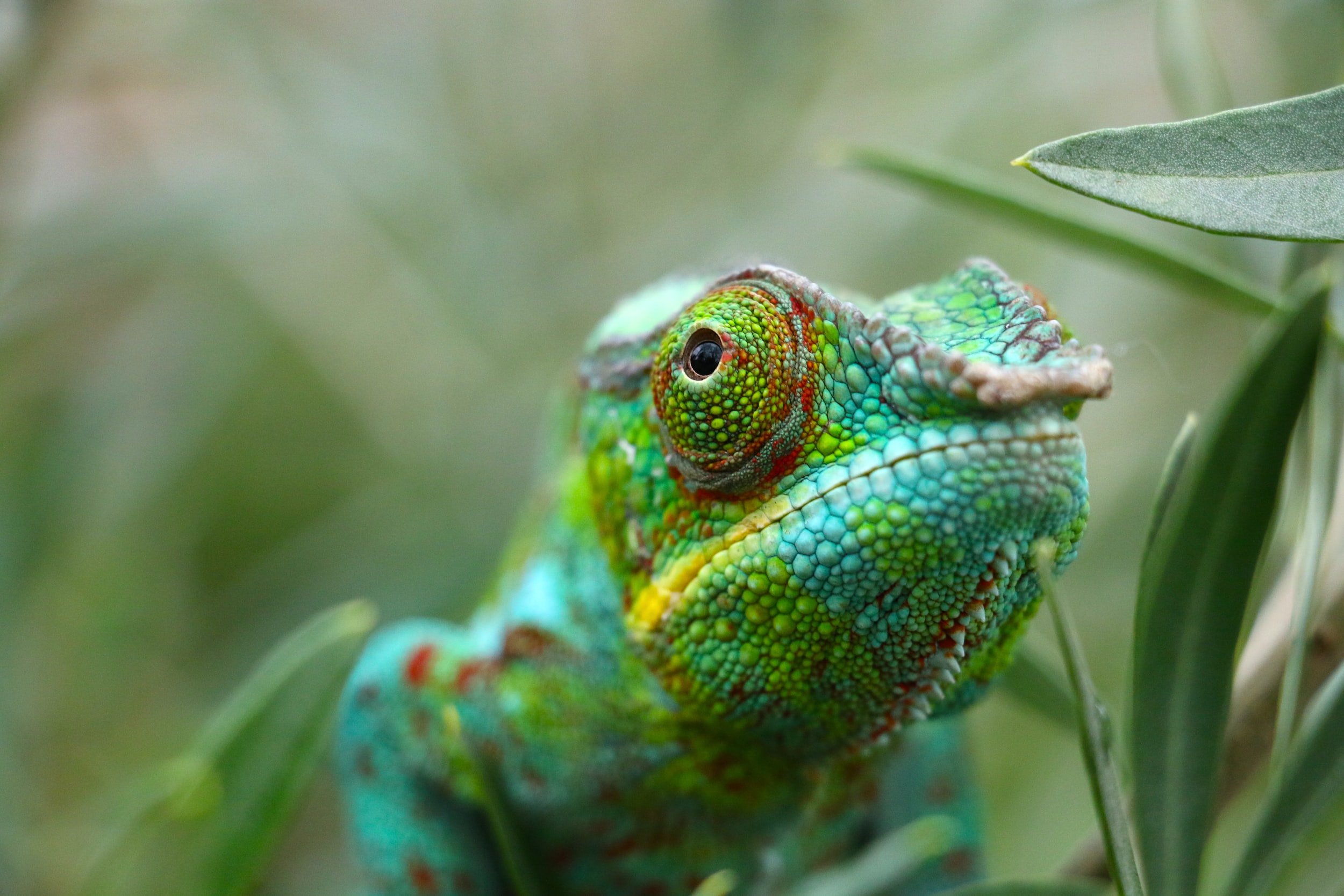
PANTHER CHAMELEON HUSBANDRY GUIDE
Chameleon feeding crash course
Panther chameleons are insectivores, which means that their diet consists primarily of insects, but it isn't this simple. Let's start with the basics, then we will go into detail for each:
Insects must be alive
There are lots of bugs in the world but only some of them are appropriate for our chameleon friends.
Feeder insects need to be fed organic chameleon-appropriate vegetables for at least 8 hours before being fed to your chameleons. This is called gut-loading.
Coating the feeder insects with the right supplements is critical to the health and development of your chameleons. We will chat about supplements.
It's important to feed chameleons the appropriate amount and size of insects for their age/stage of development.
Chameleon-appropriate feeder insects
There are a few factors you have to take into account when selecting feeder insects. Let's start with nutritional value. It's important to feed a variety of insects. Options such as dubia roaches, silkworms, red runner roaches, black soilder fly larve are great options, and my favorite picks. Other insects like hornworms, wax worms, and even snails can be fun treats. The Chameleon Forums is a critcal resoures for new and experienced keepers alike. Below I've provided a quick reference guide for selecting feeders.


Gut loading
Above I provided the Chameleon Forums gut load quick reference guide. Think of your insects as two slices of bread. You can eat that bread, it would quench your hunger, but over time eating bread alone will take its toll on your health. What if you added lettuce, tomatoes, cucumbers, smear, roast beef, and alfalfa sprouts? You have just transformed two slices of bread into a well-rounded meal.
This is the thinking behind gut-loading your feeder insects. Feeders with empty stomachs are essentially empty shells, gut loading allows keepers to deliver vital nutrients in a package chameleons love. It's important to always be aware of the things you are choosing for your gut load. Only use organic fruits and veggies. Only gut load with chameleon-safe options. The quick reference guide above is full of valuable information.
Supplements!
Supplements are not negotiable. They are necessary to the health and longevity of your chameleons. It's important to have a good understanding of what supplements chameleons need, when, and why. Let's break it down:
There are 3 primary supplements: calcium without D3, calcium with D3, and a high-quality multi-vitamin
What is D3? In nature, retiles absorb UVB from the sun which is converted into D3. Their bodies then use D3 to process calcium for an array of important bodily functions, including bone health. As keepers, we work to provide our chameleons with UVB through our lighting choices. The reality is, we will never be able to recreate lighting as effectively as the sun. Supplementing D3 helps to correct those shortcomings. You have to be careful with D3. When using the sun to naturally produce D3 reptiles have a shut-off switch to prevent overproduction. This is not possible with artificial D3, you can overdose reptiles.
Calcium without D3: Feeders need to be dusted with calcium without D3 for almost every feeding. More on this later.
Calcium with D3: Feeders should be dusted with calcium with D3 a maximum of two times a month. I follow a schedule of every other Sunday.
High-quality multi-vitamin: In nature, chameleons are free to eat any bugs they chose, to seek out certain nutrients when they need them, essentially balancing their out vitamin and minerals needs. As keepers, we have a responsibility to fill this gap, and that is where multi-vitamins come in. Feeders needed to be dusted with a high-quality multi-vitamin at least twice a month. I alternate between D3 and multivitamins on Sundays. Two Sundays of D3 and two of multi-vitamins.
Wondering what "dusting" means? I definitely did the first time I read a reptile care sheet. When dusting your feeders, your goal is a cover them in a light coating of the supplements. You are aiming for a slightly dusty appearance as opposed to a powdered donut. A little goes a long way.
Creating a supplement schedule will help keep you on track. The simpler the better. Monday - Saturday I dust all my feeders with calcium no D3, on Sundays I alternate between: Multivitamins along with calcium no D3 on the 1st and 3rd Sunday or Calcium with D3 on the 2nd and 4th. The images below are the schedules I follow based on the chameleons’ age.
Feeder sizes and quantity
Selecting the right-sized feeders for your Chameleons is important for one simple reason. If the feeders are too large your chameleon won't eat them. I can't begin to express the issues this can cause. But how do you know what size is the right size? A great rule to follow is that feeders need to be less wide than the space between your chameleon's eyes. When in doubt, go smaller, not larger. Simple.
Quantity and Frequency will vary over the life of your panther chameleon. Babies (3 months - 12 months-ish) need to be fed all they can eat every day. This will slow down when your chameleon is around 7 months. at 12 months and older you can cut back to 3-8 feeders, depending on your individual chameleon, 3 times a week. Make sure the feeders are the right size, gut-loaded, and dusted with the appropriate supplements.
Extra helpful chart
There are certian nutrients that you want to pay attention to when it comes to feeder insects Protein, Fat, Fiber, and Ash. Your goal is to select feeders with good ratios of these elements. The best staple feeders are high in protein, low in fat and have a low Phosphorus to calcium ratio (more calcium than phosphorus) The chart below gives a general breakdown of this information for a number of different feeders.


